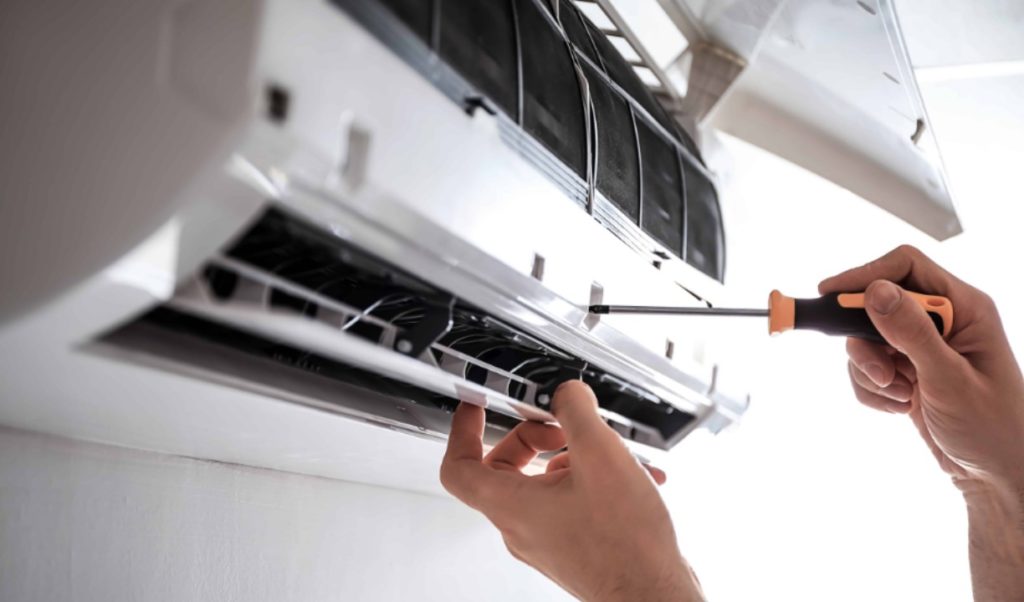Air conditioning is a vital aspect of modern living, ensuring comfort and well-being, especially in regions with extreme climatic conditions. For homeowners, a proper air conditioning system can mean the difference between a relaxing oasis at home and a sweltering, uncomfortable environment. At the same time, for heating, ventilation, and air conditioning (HVAC) professionals, the air conditioning installation process represents an opportunity to provide a crucial service while differentiating themselves with efficient and innovative practices. Here, this guide will explore cutting-edge methods that can enhance the AC installation process, fostering a climate of satisfaction for both technicians and homeowners.
1. Proper Sizing and Load Calculations
The starting point of any successful air conditioning system is the correct unit size. An oversized unit leads to short cycling, poor dehumidification, and unnecessary wear and tear. Conversely, an undersized unit can lead to inadequate cooling and high energy bills as the system struggles to maintain the desired temperature.
Traditionally, HVAC professionals relied on rules of thumb for sizing, but today, manual J calculations—part of a comprehensive load calculation—and modern software have replaced guesswork. These new methods take into account a home’s layout, insulation, window types, and a myriad of other factors to determine the exact cooling load needed for peak efficiency.
2. Ductwork Design and Sealing
A high-quality air conditioning installation is only as good as the ductwork delivering cool air throughout the home. Poorly designed or leaky air ducts can result in up to 30% energy loss, according to the U.S. Department of Energy.
Innovative duct sealing methods such as Aeroseal use polymer particles to seal leaks from the inside, offering a faster and more effective solution compared to traditional mastic or tape. An optimized ductwork design, with the right balance of supply and return air, ensures consistent temperatures in all areas of the house.
3. Smart Thermostats and Zoning
Smart thermostats are revolutionizing the way we control and interact with our air conditioning systems. They learn your habits, adapt to your schedule, and can often be controlled remotely via smartphones or voice assistants. Beyond convenience, smart thermostats help save energy by intelligently adjusting temperature settings based on occupancy and activity levels.
Zoning systems, when combined with smart thermostats, take this to the next level by providing temperature control to individual rooms or areas. This ensures that air conditioning resources are focused where they’re needed, which can lead to further energy savings of up to 30%.
4. Energy-Efficient Equipment
Modern air conditioning units are more energy-efficient than their predecessors. Innovative features such as variable speed compressors, which can adjust output according to the cooling demands, and refrigerants with lower environmental impact contribute to systems that are not only eco-friendlier but also more cost-effective to run.
Homeowners looking to lower their energy bills and reduce their carbon footprint should consider upgrading to a new, high-efficiency air conditioning unit. The initial investment can often be recouped through savings on monthly energy bills.
5. Professional Installation and
Professional installation is the linchpin of any air conditioning system’s efficiency and longevity. An installation that is not performed according to the manufacturer’s specifications can result in a voided warranty and suboptimal system operation.
Innovative techniques, such as pre-installation testing and verification, ensure that the system will perform as efficiently as promised. Additionally, post-installation checks and customer education on proper system use and maintenance are just as crucial to ensure the system continues to operate at peak performance.
6. Ongoing Maintenance and Service
An often overlooked but critical factor in the air conditioning installation process is the provision for ongoing maintenance and service. Regular maintenance by trained professionals can significantly extend the life of the system, improve its efficiency, and reduce the likelihood of system failures.
The innovation here lies in the provision of preventative maintenance programs, which can include reminders for service, priority scheduling, and discounted repairs—offering both value and peace of mind to homeowners.
7. Utilising Renewable Energy Sources
Incorporating renewable energy sources into the air conditioning system represents a forward-thinking approach to heating, ventilation, and air conditioning. Solar-powered air conditioning units, for instance, significantly reduce the reliance on traditional electricity sources, leading to lower energy bills and a smaller carbon footprint.
This innovation is key in promoting sustainable energy use, aligning with global efforts to fight climate change. It cuts greenhouse gas emissions, contributing to a healthier planet and supporting worldwide environmental sustainability goals.
8. Advanced Diagnostic Tools
The advent of advanced diagnostic tools allows HVAC professionals to accurately pinpoint issues within an air conditioning system before they escalate into major problems. Tools such as thermal imaging cameras and smart diagnostics software enable technicians to assess the health of a system in real time, ensuring that all components are functioning correctly.
This proactivity not only saves homeowners significant repair costs down the line but also ensures the air conditioning system operates at optimal efficiency.
Conclusion
In conclusion, the evolution of air conditioning installation practices is critical for ensuring that homeowners enjoy optimal comfort, efficiency, and reliability from their cooling systems. By adopting innovative approaches such as accurate sizing, advanced ductwork techniques, smart technology integrations, the use of energy-efficient equipment, meticulous professional installation, and proactive maintenance strategies, HVAC professionals can significantly enhance the AC installation process. These methods not only promise improved system performance and energy savings but also contribute to environmental sustainability. As the demand for more efficient, responsive, and user-friendly air conditioning solutions grows, these six innovative practices provide a roadmap for professionals looking to excel in the HVAC industry and for homeowners eager to elevate their living environments.










